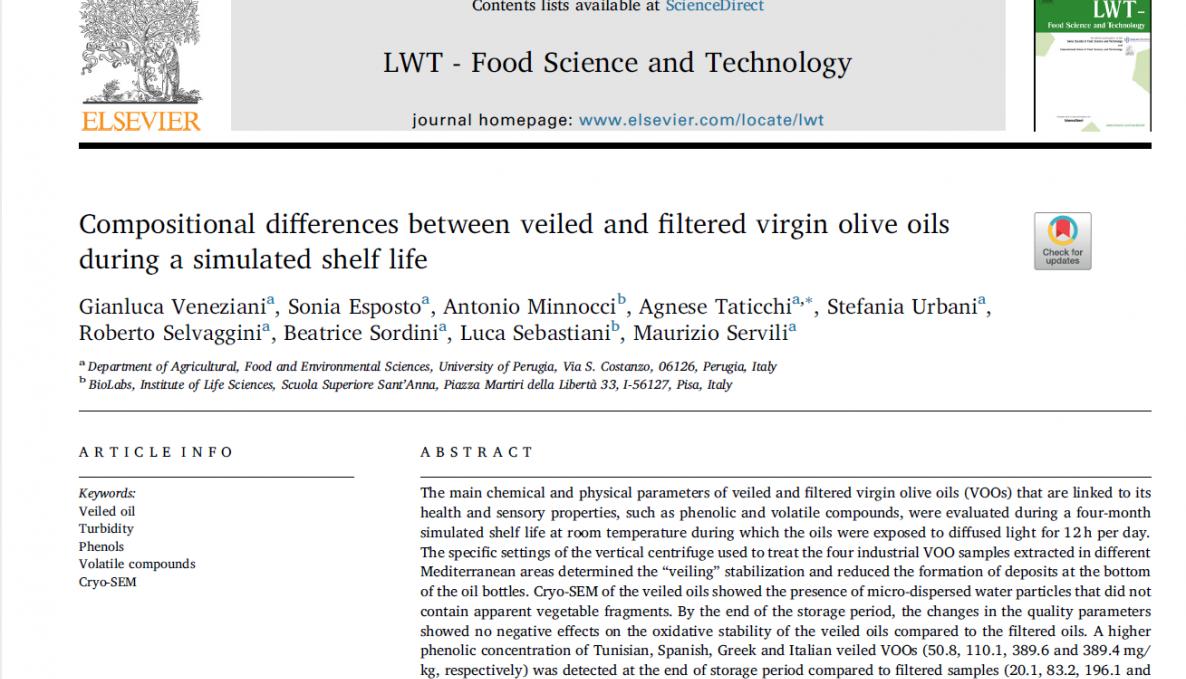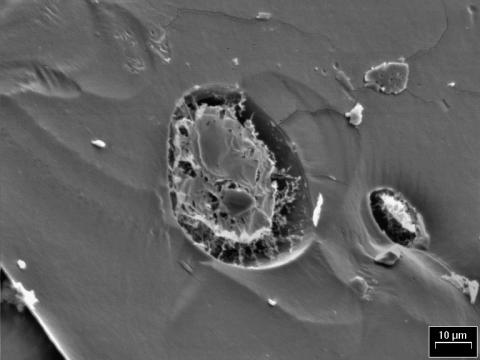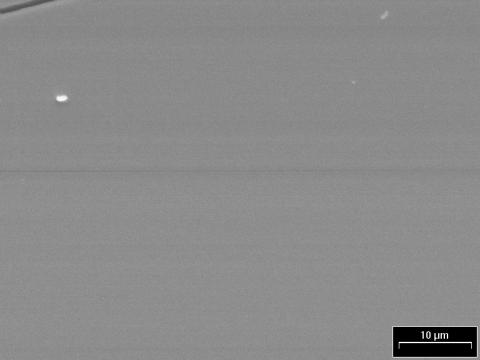Olive Oil: A study by University of Perugia Department of Agriculture, Food and Environmental Sciences and Sant’Anna School Institute of Life Sciences revealed that Veiled Virgin Olive Oil shows higher antioxidant capacity and higher quality

Recent findings on veiled or cloudy virgin oils have received considerable attention as unfiltered virgin oil gained popularity and consumers appreciate the “veiled appearance” as an indicator of high nutritional, health and sensory properties. Nevertheless, a high-level turbidity and the sedimentation of the suspended materials fail to meet the customers’ expectations.
International journal “Food Science & Technology” published a multi-author study supervised by Maurizio Servili, professor at University of Perugia Department of Agriculture, Food and Environmental Sciences and Luca Sebastiani, director of the Institute of Life Sciences at Sant’Anna School. The paper evaluated the main chemical and physical parameters of veiled and filtered virgin olive oils, such as phenolic and volatile compounds, linked to quality and oxidative stability.
This paper reported the impact of the use of a novel centrifugation application under temperature controlled conditions on olive oil quality, with particular respect to oxidative stability of the veiled oils compared to the filtered oils. Virgin olive oil samples from Tunisia, Spain, Greece and Italy were evaluated during a four-month simulated shelf life. Researchers demonstrated that “In relation to different filtration systems applied to virgin olive oil, the veiled virgin oil slight turbidity is due to micro-droplets of water without vegetable elements” pointed out Luca Sebastiani. “In addition, customers can appreciate the veiled oil cloudy appearance over the whole shelf life period” said Maurizio Servili. “The specific settings of the vertical centrifuge determined the veiled oil stabilization. The changes in the quality parameters showed no negative effects on the oxidative stability of the veiled oils compared to the filtered oils. A higher phenolic concentration of veiled virgin oils was detected at the end of storage period compared to filtered samples. The rancid defect, a sign of the autoxidation reaction, appeared six months after storage”.
Paper Authors: group led by Professor Maurizio Servili (University of Perugia) is composed of researchers Gianluca Veneziani, Sonia Esposto, Agnese Taticchi, Stefania Urbani, Roberto Selvaggini, and Beatrice Sordini; research team at Sant’Anna School Istitute of Life Sciences comprises Luca Sebastiani and Antonio Minnocci.
Click here for additional information on paper: Compositional differences between veiled and filtered virgin olive oils during a simulated shelf life. LWT, Volume 94, 2018; 87-95. Gianluca Veneziani, Sonia Esposto, Antonio Minnocci, Agnese Taticchi, Stefania Urbani, Roberto Selvaggini, Beatrice Sordini, Luca Sebastiani, Maurizio Servili.
Photogallery:
A. SEM Cryo-scanning electro microscopy imaging of Veiled extra virgin olive oil – water micro-droplets (A.Minnocci)
B. SEM Cryo-scanning electro microscopy imaging of filtered extra virgin olive oil – fatty acid compounds (A.Minnocci)





